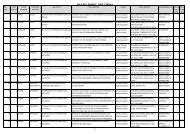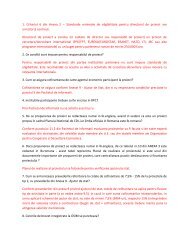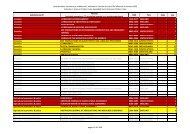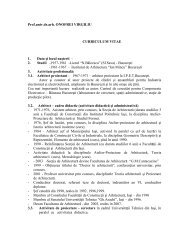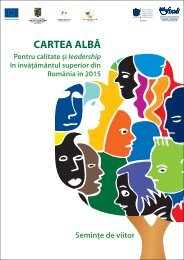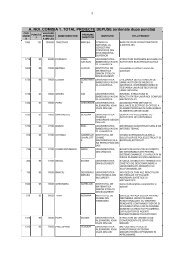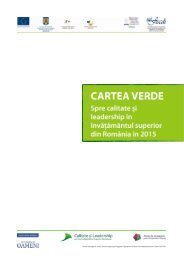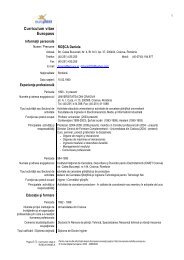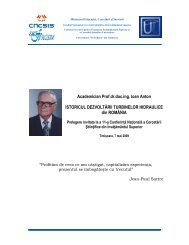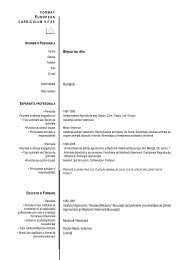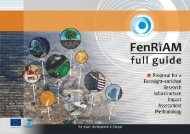Creativity involves two processes: thinking, then producing. Innovation is the production orimplementation of an idea. If you have ideas, but dont act on them, you are imaginative but notcreative.“Creativity is the process of bringing something new into being...creativity requires passionand commitment. Out of the creative act is born symbols and myths. It brings to ourawareness what was previously hidden and points to new life. The experience is one ofheightened consciousnessecstasy.” ollo ay, The Courage to Create“A product is creative when it is (a) novel and (b) appropriate. A novel product is original notpredictable. The bigger the concept, and the more the product stimulates further work andideas, the more the product is creative.” Sternberg Lubart, Defying the CrowdThe definition of innovation links the world of ideas to the world of human affairs, includingbusiness. (For brevity, innovation will be used to mean innovation and creativity).The scope of innovation can be small or large. At one end of the scale lies a single tiny refinementto a simple productat the other lie whole new business strategies, paradigms and philosophies.Innovation also acts along the entire spectrum from soft to hard, where soft envisagescommunication, vision, and peoples behaviour and hard stands for structure, organisationalforms, procedures and IT systems. Innovation and creativity are be addressed everywhere in theorganisation.Innovation is the production or implementation of ideas. Innovation is an action orimplementation which results in an improvement, a gain, or a profit.The National Innovation Initiative (NII) defines innovation as The intersection of invention andinsight, leading to the creation of social and economic value.3. Product/Services/ arkets Innovation: Creating new or significantly differentiatedproducts, services or go-to-market activitiesThe nature of innovation the inherent definition of innovation has changed today fromwhat it was in the past. It’s no longer individuals toiling in a laboratory, coming up with somegreat invention. It’s not an individual. It’s individuals. It’s multidisciplinary. It’s global. It’scollaborative. Sam Palmisano, Chairman, President and CEO, IBLeadershipLeaders play several crucial roles in innovation. They can help the organisation understand itsinnovative capacity and its strategic need for innovation, and then inspire the organisation with asense of strategic purpose.Leadersvalues influence the behaviour of the whole organisation. Their attitude to risk and tohonest error can help create a climate where new ideas are welcomed and mistakes are acceptedas a by-product of enterprise.If he has the courage and wisdom to recognise that his own patterns of thinking may not besufficient for the future, he can help their organisation to get in mental shape for that future. Hecan create resource structures that nurture innovation. And every leader can be a skills coach totheir executive team, demonstrating how to listen to new propositions attentively and with anopen mind.Through these roles, a leader can foster great innovation irrespective of their personal style andpreferences in dressInnovation is defined as using new ideas or applying current thinking in fundamentally differentways that result in significant change. There are three types of innovation that contribute towealth creation in organizations:1. Business odel Innovation: Significantly changing the structure and / or financial model ofthe business.2. Operations Innovation: Improving the effectiveness and efficiency of core businessprocesses and functions.50Policy StrategyA separate innovation agenda is usually less helpful than identifying where innovation fits withinthe organisations policy and strategy.Nor does innovation automatically have to have top priority in the short term. An understandingof markets and the organisations innovative capability may suggest better alternative strategies(e.g. fast follower, excellent low-cost deliverer, or trusted partner).51The innovators dilemma (Clayton Christensen) is that long-term radical innovations are oftenignored or rejected by companies that focus too closely on existing customer needs andprofitability.Sometimes an organisation needs to completely reframe its strategic position and thinking.PeopleEmployees, contract staff and volunteers are a huge fund of ideas. They are also in daily directcontact with other stakeholders (customers, suppliers, competitors) who will generate ideas forinnovation. Effective communication channels will share and convey these ideas within theorganisation.How innovation is recognised and rewarded influences the internal climate for change.A freely operating labour market within the organisation helps people move to pursue theirideas. This may unleash entrepreneurial or intrapreneurial thinking and behaviour. Theorganisation and its people management processes need to be ready for this.Creative and innovative thinking, skills and tools can be learned and practised. So can ways toovercome or get around the blocks to creativity that naturally occur to anyone from time to time.Partnerships ResourcesIdeas are the principal resource of innovation. How they are treated is the principal resourcemanagement question.Organisations need to understand how to create and manage intellectual capital and the value ofknowledge.Organisations need new ways of looking for partners. Traditional groupings may not be optimal forfuture market opportunities.Physical environments affect peoples ability to innovate. Some organisations put great emphasison overtly creative or even crazy surroundings. Crazy may be going too far what seems towork is stimulus and flexibility.recruitment, IT systems, bid management, benchmarking, performance measurement andmanagement.Process innovation can mean inventing a new process. It can also mean finding new ways toimprove an existing process including complete redesign.Project and process orientated people can be creative too. They often adopt structured creativitytools very readily.Continuous improvement kaizen is sometimes misunderstood as the enemy of innovation. Bothare necessary neither is sufficient alone.A best practice process for innovation identified by a Europe-wide EF Benchmarking Study in1 is:1. Idea generation.2. Idea collection.3. Selection.4. Development.5. Implementation.6. Follow-up and review.ProcessesCertain processes are seen as natural parts of innovation: new product development NPD, forexample, or research and development D, market scanning and suggestions schemes.But many other processes (especially support processes) can affect an organisations ability toinnovate. Think of the impact of investment appraisal, customer relationship management C ,5253
Corporate social responsibility of universities hat is CSR and which are the main characteristicslocal communities impactcontinuous delivery for local communities efine ISO 00 and the role of this standard regarding the environment hat is CSR and which are the main characteristicsCS, sometimes referred to as C (Corporate esponsibility), is concerned to ensure thatorganisations conduct their business in a way that is ethical. This means taking account of theirsocial, economic and environmental impact, and consideration of human rights. It can involve arange of activities such as:• Working in partnership with local communities• Socially responsible investment (SI)• Developing relationships with employees and customers• Environmental protection and sustainability• “It can be seen as a form of strategic management, encouraging the organisation to scanthe horizon and think laterally about how its relationships will contribute long-term to itsbottom line in a constantly changing world” (Chartered Institute of Personnel andDevelopment).Six core competencies for managers involved with CS in organisations:• Understanding society• Building capacity• uestioning business as usual• Stakeholder relations• Strategic view• Harnessing diversityThe Green Paper of the European Commission (uly 2001) defines Corporate Social esponsibility(CS) as “a concept whereby companies integrate social and environmental concerns in theirbusiness operations and in their interaction with their stakeholders on a voluntary basis”.CS advantages for enterprises include:‣ contributes to creating and maintaining a high profile‣ guarantees strong relationships with stakeholders‣ creates a better, safer and more stimulating work environment‣ improves business management efficiency‣ protects from boycott actions‣ makes access to funding easier‣ allows to benefit from fiscal advantages and administrative facilitation‣ reduces enterprise risk contributes to increasing shareholder value in the markets whereethical indexes are adopted (Anon 2002).Education has a strategic importance in the current era meanwhile it can be viewed as asystematic strategy which is used to create desired changes in individual behaviour in society forthe benefit of all. At the same time education is liberating for the individual and creates lifechances. Education produces basic properties and services for meeting the vital needs of a nationlike health, security, education, defence, communication and cultural development.The popular argument for university education (Crowther 2003) is based upon the creation of apotential for economic capital inherent in the acquisition of tertiary education, and this isconsidered to be sufficient justification in its own right. Universities are concerned however with adifferent type of capital which they jealously guard and this is intellectual capital. any withinhigher education would argue that one of the purposes of a university is to create intellectualcapital. Indeed universities seek to appropriate ownership of this intellectual capital and one ofthe sources of dispute in universities is concerned with who owns this intellectual capital academics or the universities as their employers. This intellectual capital is seen as a source ofeconomic capital in the future but considerably less attention is paid to imbuing students withsuch intellectual capital.Education and cademic Life Interactions for niversitiesContemporary civilization levels intends academic levels of education and scientific policies thatstates esearch - Development ( D)” studies must be gained and the sources /mental tendency5455must be increased to cover the increases in level improvement and necessities” must be followed.Thus, accelerating in passing through to knowledge society is proposed. Essentially, D andmanpower levels must be thought together by their qualitative and quantitative properties. But,the profile that become no reason but result relationship by the source restricts approach in ourcountry, stated below is observed (Topal and Crowther 2005).Improving their cultural levels and social relations, strengthening their knowledge and experiencesin academic lifethe basic movement point is pulling, sharing and participation to the top level by“win win” principle. In this range, to obtain the happiness happens from covering theexpectations when demanding education and instruction services. Educating in aspects of reachingself development and maturity in individuals by knowledge-ability responsibility comprehension,all universities and academicians must be in relations with each other and proceed with adeveloped association culture, and service comprehension must be a basic approach. Studentsand other shareholders are also social partners sharing a common happiness, they are theindicators for our work results, productivity and success and they must be utilized as ourperformance evaluation criteria. An organization which believes in (principles values) unity, canbe successful on CS principles and applications.Thus, the reality about the strategic applications containing “trust relations” of the teamsauthorized for academic studies and the interactivity between such perfections like “knowledgeaccumulation, ability, behaviour and capability” in individual activities appears as the way toproceed. With these properties completed by “principles and values” and in aspects of “mission,vision, strategies, target performance criteria development and application”, it is necessary toknow that this approach can be materialized like “students, associations and foundations andsociety” collaborated with environment and “happiness of capable partners”. The approachexpressing that all these necessities in aspects of values like premises as targets and indicators,and successor as planned budget foresights, must become a united whole with collaborative andcoordinated strategies, consumer and process (production, knowledge, work) strategies andlearning processes (Human esources Processes) (Topal 2000b).Thus the socially responsible ethos of higher education has been subordinated to the forces ofmarketisation and both society and the participants in such education are the poorer for it.Essentially, globalization approach in universal dimensions changed and developed in last yearsand this added another dimension and importance to the subject in aspects of reaching qualifiedlife and obligated harmony to these activities. In a top level approach developed in all56organizations of the country, a sharing management that becomes a united whole with theassistance of all partners, a team that makes their work with pride and responsibility and anacademic environment approach with a system that is proud of its individuals and rewards bytaking them into consideration is a kind of urgent necessities as all as civilized in the world.Implications for the Future of EducationWe need serious, concerted efforts to integrate applied ethics and social responsibility at all levels,especially education ethics at all levels. The “Applied Ethics Policy Integration odel” provides afoundation for the ethics and policy leader, academic, health care provider, and others. It allowsthem to take a formal structural approach toward integrating educational and organizationalethics with its essential social responsibilities, and those of other key stakeholders in the academicsystem, including all components. Ideal education system has established and integrated anorganizational corporate ethics, social purpose, environmental ethics, and social responsibilityfunctions and also in academic level for Universities. Committees of responsible people would beformed for each discipline and meet as often as appropriate. epresentatives from each academiccommittee might meet monthly, integrate their perspectives, and present their views. This is agreat start toward dealsing with ethical complexity, by giving essential knowledge on socialresponsibility and accounting, marketing, engineering, and environmental and environmentalethics. But this system needs formal voices as well as the more commonly heard voices of socialpurpose and, to a lesser degree, organizational ethics.Local community impactCorporate Social esponsibility (CS) is a comprehensive community-change initiative (CCI). Bydesign, CCIs create community-level change through the active and comprehensive involvement ofkey community players. Shared resources and expertise help communities to identify keycommunity issues set ambitious goals and foster policies, programs and services that canstrengthen individuals, families and communities. CS seeks to build community capacity andimprove the quality of life in communities. Through comprehensive efforts and targeted actionplans, communities can improve educational outcomes, employment, and health and well-beingof community residents. CS is a driving force in strengthening the process skills of individuals inthe community, enabling people to work together toward common goals and objectives (auschand Patton 2004).57



